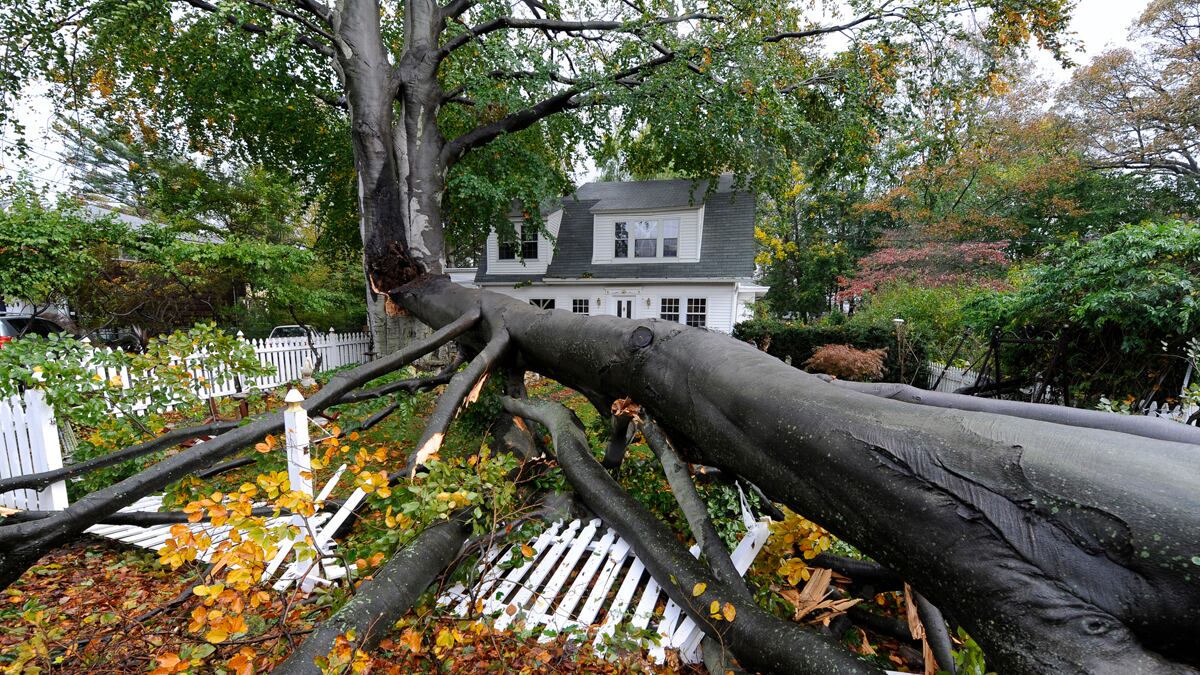In times of crisis, few people instantly think in terms of dollars and cents. But before the floodwaters have subsided, the insurance industry has already hastened to calculate the damage from Sandy.

The most widely cited economic and insured loss projections came from Eqecat, which does risk modeling for insurance companies. On Monday, it projected insured losses—meaning the amount insurance companies would have to pay out—due to Hurricane Sandy of $5 billion to $10 billion. Eqecat estimated the total effect on U.S. economic activity would be between $10 billion and $20 billion. Bill Keogh, the president of Eqecat, said that the damage done by Sandy, although clearly extensive, is well within the range of the models Eqecat builds.
He pointed out that New York City, which does not get hit with severe storms with anywhere near the frequency of, say, Florida, has seen similar storm surges before: Hurricane Donna in 1960 and Hurricane Agnes in 1972. Also, he noted, the economic loss from this hurricane is magnified by the fact that New York City is a wealthy area. Lots of people leave here and they own lots of valuable property. The rising cost of hurricanes in insured losses is, to a large degree, a function of rising home values.
But the insured losses for insurance companies may not reflect the sum total of economic damage suffered by the region. Hurricanes can cause damage to property in a few ways: storm surges and flooding, wind, and inland flooding. Although there has certainly been substantial wind damage, like trees falling onto homes, the truly catastrophic damage up and down the coast of Long Island and New Jersey largely comes from the storm surge flooding.
Wind damage is covered by standard homeowner’s insurance. But water damage from flooding is provided through the federally subsidized National Flood Insurance Program, which covers 5.6 million individuals and business. There is a small “excess flood insurance” market, but the overall flood-insurance market is dominated by the feds. Which means private insurance companies aren’t on the hook for losses tied to coastal flooding.
The storm also did a number on New York City’s transportation system. Keogh said that the city’s infrastructure isn’t designed to deal with that much salt-water sloshing through the city and, especially, its subway tunnels. That will impose direct costs on the city, as crews work to pump water out of tunnels, restore electricity, and repair storm damage.
But it will also impose massive indirect costs. With the subway and commuter rail shuttered, commerce in Manhattan and other parts of the city will fall dramatically, as shoppers and workers simply can’t get very far from where they live. (Your correspondent is working from his apartment in Brooklyn right now as The Daily Beast’s Chelsea offices are closed). So, a business owner who suffered relatively little wind or water damage may nonetheless suffer a dramatic decline in income for the next week. “They have to look very closely at their policy” to see exactly what damage they can claim, said Keogh. New York City’s economy is also propelled in large part by tourism. In 2011, some 50 million tourists visited the U.S. But with air and train routes shut down for the next week, hotels, restaurants, and shops that cater to tourists will likely see lower revenues.
The question Sandy brings up for New Yorkers most immediately—and for the insurance industry over the next several decades—is whether these types of catastrophic events are going to be happening more due to climate change.
Two weeks ago, Munich RE, the German reinsurance giant, released a prescient report. The insurance company argued that the U.S., by virtue of its densely populated coasts and vast territory, is uniquely poised to suffer disproportionately from weather-related events. “Nowhere in the world is the rising number of natural catastrophes more evident than in North America,” the report noted. Since 1980, the U.S. has suffered more than $1 trillion in weather-related damage and just more than $500 billion in insured losses.
Because North America is “exposed to every type of hazardous weather peril—tropical cyclone, thunderstorm, winter storm, tornado, wildfire, drought, and flood,” it will feel the brunt of rising global temperatures. The study argues that “climate change particularly affects formation of heat waves, droughts, intense precipitation events, and in the long run most probably also tropical cyclone intensity.” Translation: more and stronger storms like Irene, Katrina, and Sandy. Storms—hurricanes, tropical cyclones, and thunderstorms—account for 76 perfect of the losses Munich RE calculated for North America in the past 30 years. If climate change is spurring greater and more violent storms, the insurance industry may have to change the way it calculates its exposure to them—and hence what it charges for insurance.
In a release, Peter Röder, the Munich RE board member who oversees their North America operations, said, “We should prepare for the weather risk changes that lie ahead, and nowhere more so than in North America.”
Or as Governor Cuomo put it on Tuesday while speaking to reporters, “We have a new reality when it comes to these weather patterns. We have an old infrastructure and we have old systems, and that is not a good combination.”






